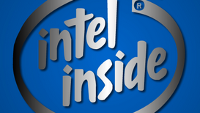Intel to phase out subsidies that flooded the market with cheap Android tablets

Ever since Apple decided to go with its self-designed A4 processor for the OG Apple iPad instead of Intel's Silverthorne chip (later known as Atom), the silicon slinger has been working hard to get its chips inside of Android tablets. Using subsidies to persuade tablet manufacturers, it has been able to have its Intel Atom chips placed inside cheap Android slates, in place of the ARM based processors that might have been used instead.
Besides offering cheap prices for the Atom chips, Intel also agreed to a co-marketing budget in some cases. Intel also offered to reimburse tablet manufacturers for the price of redesigning the motherboard to accommodate Intel's chips. According to Bernstein Research analyst Stacy Rasgon, the subsidies amount to about $51 per tablet, which is quite a gift considering that these slabs sell for $199 or less. Rasgon says that for 2014, Intel will be selling chips to these tablet manufacturers at a tad above costs, with its margins close to zero.
Morgan Stanley analyst Joseph Moore says that Intel lost $3 billion in its mobile chips division in 2013, and is expected to show another $4 billion in losses this year. According to the analyst, Intel has had enough after the $7 billion in losses, and will start to phase out the subsidies in 2015.
For consumers, eliminating the subsidies will mean higher priced low-end Android tablets over the next few years. For Intel, it will be an attempt to turn around a mobile chip division that has been drowning in red ink.
source: AppleInsider
"While we do expect that [Intel] phasing out tablet subsidies over the course of 2015 will cause modest reduction in losses, it could also blunt the company's momentum in tablets significantly. Eliminating these losses would require either massive revenue gains, or massive expense cuts, and we don't see a clear scenario for either of them."-Joseph Moore, analyst, Morgan Stanley
For consumers, eliminating the subsidies will mean higher priced low-end Android tablets over the next few years. For Intel, it will be an attempt to turn around a mobile chip division that has been drowning in red ink.
Follow us on Google News














Things that are NOT allowed:
To help keep our community safe and free from spam, we apply temporary limits to newly created accounts: